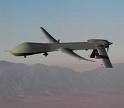The World of Drone Warcraft

U.S. officials have disclosed plans for further deployment of its drone planes in East Africa. A base on the Seychelles for Reaper unmanned aerial vehicles existed from September 2009 to spring 2011. Now, the U.S. has decided to reopen it. Another one is to be established in Ethiopia in addition to the existing one in Djibouti.
The need for further deployment of drone aircraft is explained by the growing fears in Washington that after the elimination of Osama bin Laden, the Al Qaeda network is swiftly spreading out its positions, and its base is shifting to East Africa. In recent years, it was Yemen that was considered Al Qaeda’s main haven, but with the uncertainty surrounding Yemen’s future, the terrorist network might look for other places which are beyond the control of U.S. intelligence.
The drones to be stationed on the Seychelles will not only perform intelligence surveillance functions, they are going to be equipped with Hellfire missiles (each carrying up to 8 kg of explosives) and satellite-guided bombs.
In recent months, the U.S. has acquired enough experience in using drones against suspected terrorists and other kinds of its foes in at least six countries – Iraq, Afghanistan, Pakistan, Yemen, Somalia and Libya. Now, with the deployment of new and the reopening of previously existing bases, the whole region of East Africa and the Gulf of Aden is going to be covered by U.S. drones. The area for this relatively new type of combat is expanding, and one could only wonder whether there is going to be an end to it.
The plans disclosed by the U.S. officials in simultaneous interviews to several leading American papers are alarming and questionable from both military and ethic points of view. As previous experience shows, one of the most common and ethically questionable consequences of the drone strikes is their non-discriminatory and unselective nature. In Afghanistan and Pakistan the drone strikes resulted in numerous casualties among civilians with a ratio of militants to civilians being hard to determine…
The political consequences are also well known. The U.S. has spoilt its relations with long-time allies in the region – both Pakistan and the present government of Afghanistan led by Hamid Karzai, who has always been looked upon as American minion.
Another consideration in regard to the proposed drone operations in East Africa and the Western part of the Indian Ocean can also be derived from previous experience. There are serious doubts that closer surveillance and intensified strikes over suspected terrorist bases in any new region of the world will really yield significant success in the fight against Al Qaeda. The whole network is a loose structure that can easily shift its operations and bases from one area to another, as it did when Afghanistan and Pakistan came under constant fire. Therefore, shifting the fire to East Africa will only mean further dissemination of the terrorist network.
What the plans do disclose, is the new tactics used by the U.S. military and likely to become the most widely used tactics in the 21st century warcraft. The difference between a drone aircraft and, say, an F-16 fighter is that the former is operated from a computer which can be located hundreds and even thousands miles from the actual battlefield. This reduces the number of casualties among the military, but not among the local population. For any U.S. president this will definitely mean additional points in the public opinion.
But, on the other hand, all this looks like turning a real war (which is always a tragedy) into a kind of computer game when the operator of a drone aircraft can easily confuse a virtual picture with reality. Thus, any new war will be simply turned into a game, which it definitely isn’t.
And this is what is really alarming.
Stop NATO e-mail list home page with archives and search engine:
http://groups.yahoo.com/group/stopnato/messages
Stop NATO website and articles:
http://rickrozoff.wordpress.com

